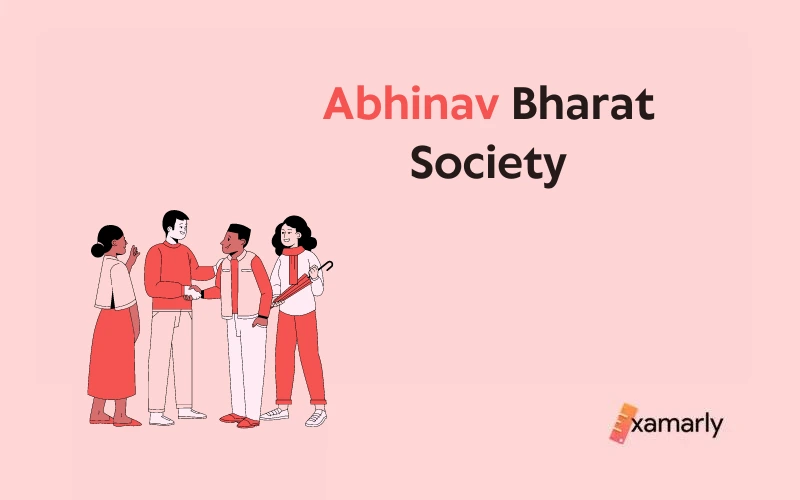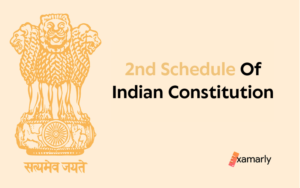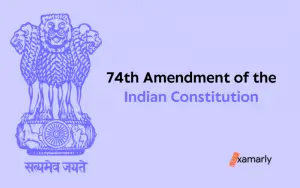Vinayak Damodar Savarkar and his brother Ganesh Damodar Savarkar founded the Abhinav Bharat Society in the city of Pune in the Indian state of Maharashtra in the year 1904. The city of Mumbai served as the headquarters for this political organization.
It was a secret society that at first was referred to as Mitra Mela. It consisted of revolutionaries as well as political activists devoted to overthrowing British rule in India through armed rebellion.
In addition to conducting several killings of English officials, Abhinav Bharat also held meetings and rallies across India. However, it was not until the end of the 20th century that society was officially disbanded.
This post is relevant for the UPSC Exam preparation of GS paper-I and is a part of the Modern Indian History of UPSC Syllabus.
- The Idea behind the Abhinav Bharat Society
- Founding of Secret Society by Vinayak and Ganesh Damodar Savarkar
- Strides of Vinayak Savarkar
- The Trial of Veer Damodar Savarkar
- Dissolution of Abhinav Bharat Society
- Abhinava Bharatha Yuvak Sangham's Final Statistics
- Conclusion
- FAQs on Abhinav Bharat Society
- What was the core ideology of the Abhinav Bharat Society?
- Which event led to Savarkar's life imprisonment?
- Was Udham Singh also a part of Abhinav Bharat?
- Who started this Abhinav Bharat Society, and what do they stand for?
- Where could one find the Abhinav Bharat Society?
- Who initiated the Mitra Mela?
- Do radicals make up the Abhinav Bharat Society?
- State the purpose of the Abhinav Bharat Society.
The Idea behind the Abhinav Bharat Society
Vinayak Savarkar, a participant in the Hindu Mahasabha from 1937 until 1943, formed the Abhinav Bharat Society. His radical beliefs included armed insurrection against the British.
Savarkar and his group killed several British officials in their attempts to overthrow the British. However, after they were caught, Savarkar apologized for his deeds and was released from a prison located in the Andaman.
Founding of Secret Society by Vinayak and Ganesh Damodar Savarkar
Along with his brother Ganesh Savarkar, VD Savarkar laid the foundation of Abhinav Bharat in the year 1904. The organization welcomed on board several hundred people who identified as political activists and revolutionaries.
The Savarkars were found guilty and sent to prison following a number of assassinations of British officials.
The Young India Society was established in Nashik as the “Mitra Mela” while VD Savarkar was still a student at Fergusson College in Pune.
Even in India, it had branches, and after Savarkar moved to London to pursue a legal education, it finally expanded to London.
Strides of Vinayak Savarkar
Born on 28th May of 1883 in a place called Bagur in Maharashtra, Savarkar was active in the Hindu Mahasabha and in India House. He was also known as a writer and advocate of Hindutva, a type of nationalism that is popular in India.
Savarkar presided over the Hindu Mahasabha in the period between 1937 and 1943. He fought untouchability in his life in Ratnagiri.
He left for London in 1906 to study law. That year, he put together a book called Mazzini Charitra, which contained a 25-page introduction he wrote in addition to a translation of the revolutionary Italian Mazzini’s ideas.
The initial 2000 copies of the book, which was released in Maharashtra in 1907, were completely sold after just a month. The book Hindutva: Who is Hindu? was also written by Savarkar.
He embraced Mazzini’s secret organization and guerrilla combat techniques and distributed insurgent propaganda throughout London. Savarkar also urged his Indian companions through letters and asked them to unite their forces and stand together against the British.
Apart from the Independence Movement, he was also involved in the Swadeshi movement, and later joined Tilak’s Swaraj Party.
He instigated patriotic lectures and actions which outraged the British Government. The British government consequently revoked his Bachelor of Arts degree.
He established the Free India Society. He is also recognized as Swatantryaveer Savarkar.
Relatable Articles:
The Trial of Veer Damodar Savarkar
- Veer Savarkar was detained in 1909 and found guilty of planning a mutiny with weapons against the Indian Councils Act’s Morley-Minto reform.
- Subsequently, he was captured in 1910 because of his connections with the India House.
- He was convicted for both charges including complicity in the killing of Nashik Collector Michael Jackson, and a conspiracy against the king with reference to 121-A of the Indian Penal Code.
- After the second trial in 1911, Savarkar was found guilty and given a 50-year prison term. Further, he was transferred to the Andaman & Nicobar Islands Cellular Jail.
- He chose to die fasting and stopping taking in food, which led to his death on the 26th of February, 1966.
Dissolution of Abhinav Bharat Society
Savarkar had created the Hindu Rashtra Dal 10 years before he finished his time as the Hindu Mahasabha’s president, despite the fact that this revolutionary secret society was abolished in 1952.
The aforementioned Rashtra Dal planned to instruct Hindus in the military. They did this so they could combat Muslims, Gandhi’s supporters, and even the Mahatma.
The work of the same institution was advantageous to this movement.
Lots of people have also argued about whether or not the Abhinav Bharat Society’s methods should be labeled as revolutionary or radical.
Abhinava Bharatha Yuvak Sangham’s Final Statistics
On July 1, 1909, at the Imperial Institute in London, Madanlal Dhingra assassinated Lt. Col. William Curzon-Wyllie as a result of Savarkar’s revolutionary concept.
- Dhingra was detained and imprisoned.
- Anant Laxman Kanhare was the one who put an end to the life of A. M. T. Jackson, the district magistrate of Nasik, in India in 1909, during the historic “Nasik Conspiracy Case.”
- The research provided evidence of the existence of the Abhinav Bharat Society as well as the role of the Savarkar brothers in administering the organization.
- After transferring 20 Browning handguns to India, Savarkar was found guilty of the Jackson murder and given a life sentence of “transportation.”
Conclusion
The Abhinav Bharat, formally known as Mitra Mela, was a political society in India that sought independence from the British. The society also celebrated important Indian calendar dates, including Ramanavami and Ramadan month. However, despite this association with the left, the society remained secret until 1952.
FAQs on Abhinav Bharat Society
What was the core ideology of the Abhinav Bharat Society?
The core ideology behind the society of radicals was to overthrow the British Raj. In the process, members of the society assassinated many British Officials.
Which event led to Savarkar’s life imprisonment?
In the infamous Nasik Conspiracy case of 1909, Nasik’s district magistrate, Arthur Mason Tippetts Jackson, was murdered. The investigation led to the part the Savarkar brothers played in it and that Vinayak Savarkar supplied 20 browning pistols, including the weapon of the murder of A. M. T. Jackson. After that Vinayak Savarkar was charged and sent to Andaman Cellular jail in 1910.
Was Udham Singh also a part of Abhinav Bharat?
No, Udham Singh was not part of this society but was influenced by the work of Bhagat Singh and was also engaged in revolutionary politics. He became a member of the Ghadar Party. Udham Singh killed Michael O’Dwyer for his involvement in the Jallianwala bagh Massacre.
Who started this Abhinav Bharat Society, and what do they stand for?
1904 saw the founding of a secret society known as the Abhinav Bharat Society. The said society was founded by the two brothers Vinayak Damodar Savarkar and Ganesh Savarkar.
Where could one find the Abhinav Bharat Society?
The Hindu group known as Abhinav Bharat was established in the Indian state of Pune, although it has a considerable presence in the Indian state of Madhya Pradesh. According to some, the group is a revived version of the Abhinav Bharat Society from the time before independence.
Who initiated the Mitra Mela?
1899 saw the foundation of the revolutionary society known as Mitra Mela. It was founded by Vinayak Damodar Savarkar in Nashik. This society changed its name to the Abhinav Bharat Society in 1904.
Do radicals make up the Abhinav Bharat Society?
Abhinav Bharat was a society that was created by extremists who supported armed insurrection against British authority. This society was accountable for the assassination of several British officials.
State the purpose of the Abhinav Bharat Society.
The following are the two main goals of the Abhinav Bharat Society:
a. in order to sway the opinion of people in favor of the nationalist revolution in India.
b. to gather resources, information, and money in order to organize a revolt.






